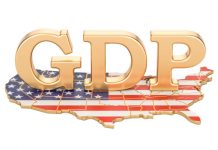Retail sales rose 0.1% for the month of May. Additionally, April’s figure was revised downward to -0.2% month/month (previously flat). The reading was lower than the consensus forecast calling for an increase of 0.3%.
Trade in the auto sector was up 0.8% m/m, reflecting increases both at motor vehicle dealers (0.8%), and automotive parts and accessory stores (1.2%).
Sales at gasoline stations fell a sizeable -2.2% m/m, reversing last month’s 1.9% m/m gain. This largely reflected a pullback in gas prices. The building materials and equipment category fell by a smaller -0.8% m/m.
Sales in the retail sales “control group”, which excludes the volatile components above (autos, building materials and gas) and is used to estimate personal consumption expenditures (PCE), rose 0.4% on the month after declining by -0.5% m/m in April (revised from -0.3% previously).
- Among the control group, the largest positive contributions came from sporting goods stores (2.8% m/m), clothing and accessory stores (0.9% m/m) and non-store retailers (0.8% m/m).
- The largest declines were at home furnishings and electronics stores (-0.4% m/m) and food and beverage stores (-0.2% m/m).
Food services & drinking places – the only services category in the retail sales report –fell by -0.4% m/m.
Key Implications
After a breather in April, consumers were back at it in May. While not large, retail spending growth edged back into positive territory. With other evidence (slowing hire rate, uptick in unemployment rate etc.) pointing to the labor market cooling however, any deceleration there is likely to see retail spending follow suit. With two months of data in for the quarter, retail spending is currently tracking 1.6% q/q (annualized) for Q2 – an uptick from a -0.8% (annualized) decline last quarter.
On the inflation front, while there is good news stemming from lower inflation readings in May, today’s report is unlikely to do much to move the Fed’s thinking with respect to the first rate cut. Retail spending was only modestly positive, and the number was below expectations. Of more interest to the Fed, is the fact that the improvement in inflation over the last two months was partially offset by a resurgence in payrolls in May combined with an acceleration in wage growth (average hourly earnings). We expect the Fed will continue awaiting a consistent flow of data in support of lower inflation, with a rate cut unlikely before December.













